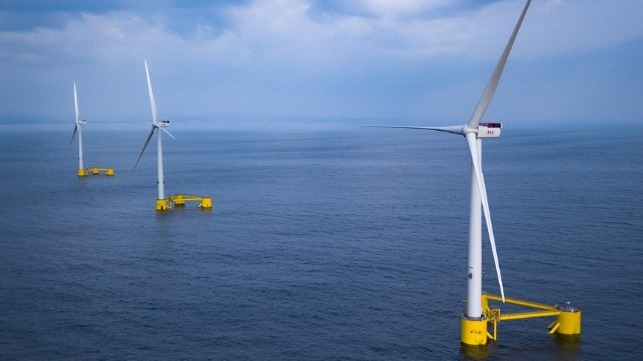Pipeline for Floating Offshore Wind Capacity Doubles in 12 Months

As the global offshore wind energy industry grows, project developers are increasingly focusing on floating offshore wind projects. A new report published by RenewableUK shows that the total pipeline of floating offshore wind projects has more than doubled in terms of capacity in the past 12 months. The membership organization that promotes wind energy development expects that floating wind will play a central role in providing clean, cheap electricity and increasing energy security for countries.
The “EnergyPulse Insights” report compiled by RenewableUK shows that worldwide floating offshore wind projects increased in 2022 to current plans for 185 GW up in the past year from 91 GW. The number of projects increased globally time from 130 to 230. The pipeline includes projects at any stage ranging from operational, under construction, approved, in the planning process, or at an early stage of development.
“The growth of floating offshore wind is surging ahead at a phenomenal rate year on year around the world,” said Dan McGrail, RenewableUK’s CEO. “We’re proud that the UK is a global leader in this innovative technology with nearly a fifth of the total pipeline – significantly greater than any other country.”
Research and development are proceeding quickly with multiple projects working on technologies to deploy floating wind turbines. Nearly all the capacity currently installed works with fixed foundations for the turbines, but to reach further offshore beyond the continental shelf requires the use of floating turbines. An increasing number of test projects have been launched with the expectation that the industry will move quickly to floating turbines before the end of this decade.
To support the expected growth, Renewable UK projects that globally 3,200 floating foundations could be installed by the end of the decade. In the UK, they expect demand to ramp up fast with the potential for nearly 1,000 floating foundations mostly in Scottish waters by 2030.
Currently, according to Renewable UK, only a small fraction of the planned pipeline for floating wind projects has been commissioned. Globally, they report of the 185 GW pipeline, 121 MW is fully commissioned at nine projects located in seven countries. A further 96 MW is under construction, while 288 MW is consented or in the pre-construction phase, 31 GW is in planning or has a lease agreement and 153 GW is in early development or is in the leasing process.
McGrail highlighted the opportunity floating wind projects provide to move further out to sea where wind speeds are even stronger. “It offers a significant opportunity to build up a whole new industry in the UK, with a world-class supply chain which will enable us to export our expertise and state-of-the-art technology worldwide.”
Renewable UK calculates that the UK’s pipeline has increased from 23 GW a year ago to over 33 GW, and from 29 projects to 51, which are planned for development in the North Sea, Celtic Sea, and the North Atlantic. The UK represents 18 percent of the current pipeline for floating wind with 33.3 GW planned.
Europe, which has the most developed offshore wind industry, overall leads the plans for floating wind projects. The report calculates that 107 GW is being developed across Europe. This accounts for 58 percent of the global pipeline. Outside Europe, leasing areas off the west coast of the USA, project proposals off the southeast coast of Australia, and South Korea make up the majority of the rest of the capacity.
The report projects that by the end of 2030, floating wind capacity could reach 41 GW globally, 11 GW in the UK, and 31 GW in Europe.
